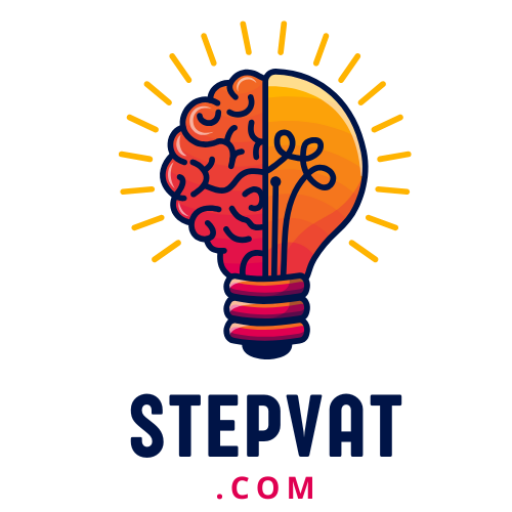Anúncios
financial trends success stories set a practical, optimistic tone and show how ideas turn into measurable outcomes you can model.
You’ll read two clear case studies. One shows a community rebuild: the Milwaukee Fortress, a 192,000 sq ft historic property turned into 132 apartments, 12,000 sq ft of amenities, and 25,000 sq ft of commercial space, enabled by federal and state historic tax credits and JPMorgan Chase tax credit equity.
The other shows a digital core banking redesign led by ITTI Digital and UXDA. In a six-month collaboration they cut training from weeks to hours, sped service, cut errors, and won an IF Design Award judged by 78 jurors. These are real, usable insights you can apply this quarter.
You’ll get a case-by-case guide that unpacks strategy, execution steps, roles, and results. Expect short, actionable sections on capital stacking, risk controls, user-centered design, and change management so you and your team can treat this as a checklist.
Key Takeaways
- Real examples show how tax credits and equity can unlock large rehab projects.
- Fast, user-centered digital redesigns lower errors and speed service.
- Each case breaks down roles, steps, and measurable results you can copy.
- Focus on capital stacking and risk controls before you invest time or money.
- Use the checklist to guide your next investment, product, or service roll-out.
Introduction
Today, you need proof that ideas work in the market before you allocate budget, and clear success stories give you that proof. You want examples you can trust. You want short, usable lessons to share with your team.
In finance and adjacent industries, the fastest wins come when services and operations pair with smart design and tight risk controls. You also need the right partners. Small moves save time and money — remember that a first-year investment banking base salary at major firms runs about $110,000 USD, so efficiency matters.
We preview two real cases. One company-led redevelopment used federal and state historic tax credits plus JPMorgan Chase equity to repurpose a 192,000 sq ft building into 132 apartments, 12,000 sq ft of amenities, and 25,000 sq ft of commercial space. The other shows how ITTI Digital and UXDA turned a 15-year core into a growth engine in six months, cutting training from weeks to hours and reducing costly errors.
You’ll get clear, practical takeaways you can use in your company, with steps to align stakeholders, assemble capital, and deliver value to clients. Scan fast, decide, and act with more confidence in a crowded world and a busy business calendar.
Today’s market context: trends turning strategy into outcomes
Right now, simple shifts in funding and design are turning plans into real outcomes. You can use clear financing tools and sharper product design to move projects from concept to occupied space.
Financing with purpose: tax credits, risk management, and local impact
Historic tax credits at federal and state levels powered the Milwaukee Fortress rehab. That money helped create apartments, commercial space, and community amenities.
Practical steps you can take:
- Do early diligence on incentives and site limits.
- Map stakeholders and align goals before contracts start.
- Scope contractors tightly to cut surprises and a lot of rework.
Digital-first services: user-centered design as a growth engine
When you make banking tools user-led, technology becomes a growth engine, not a cost center. ITTI Digital and UXDA proved this in six months: training fell from weeks to hours, service sped up, and errors dropped.
Keep teams cross-functional—finance, operations, and tech—and measure progress weekly. Note that investment banking pay remains high (about $110,000 base), which shows demand for capital and advisory expertise in the markets.
| Focus | What to do | Immediate outcome |
|---|---|---|
| Financing | Use tax credits, align partners, early diligence | Occupied space, local impact |
| Risk management | Stakeholder mapping, tight scoping | Fewer surprises, lower rework |
| Digital services | User research, product management, secure design | Faster service, fewer errors |
Case study: community redevelopment with historic tax credits and bank partnership
This case study shows how a coordinated bank partnership and tax credits revived a 192,000‑sq‑ft landmark for modern use.
The Milwaukee Fortress transformation: preserving the past, serving the future
The Alexander Company led the redevelopment with JP Cullen as contractor. Partners included the Milwaukee Preservation Alliance and Mueller Communications. The team walked the building thoroughly to scope deferred maintenance and hidden costs.

How JPMorgan Chase’s historic tax credit equity supports redevelopment
Financing combined federal and state historic tax credits with historic tax credit equity from morgan chase. Private financing and disciplined cost management filled gaps. Tim Karp of morgan chase called credits a strong economic development tool.
Measured outcomes and governance
The finished project delivers 132 apartments, 12,000 sq ft of amenities, and 25,000 sq ft of commercial space. That mix improves local impact and lease-up prospects.
Roles were clear: developer, contractor, preservation advocates, communications partners, the bank, and city stakeholders aligned on scope and schedule.
What you can learn
- Secure incentives early and validate eligible scope.
- Walk the whole building to identify risks and set contingencies.
- Structure draws to match milestones and manage procurement sequencing.
“Historic tax credits help spur neighborhood redevelopment.” — Tim Karp, JPMorgan Chase
Case study: digital banking breakthrough from outdated to award‑winning
A six-month redesign turned a legacy core into a modern, employee-first banking platform.
ITTI Digital, a Paraguay-based vendor, partnered with UXDA to rethink a 15-year system. The program focused on employees and real work-as-done. The result earned an IF Design Award judged by 78 experts.

From clunky back office to IF Design Award-winning core
The team rebuilt flows so staff complete tasks faster and with fewer steps.
Training dropped from weeks to hours. Human error risk fell sharply. The platform is ready for new markets and customer-facing products.
What changed: faster service, fewer errors, shorter training, global expansion
Service speed improved. Employees handled more requests per hour.
Errors declined because approvals and validations were built into the flows.
That gave the firm confidence to package solutions for other markets.
Practical takeaway: design thinking meets security and complex workflows
Design and strict controls work together. Use clear info architecture and security-by-design for approvals and audit trails.
Assemble a small core team: product, risk, compliance, engineering, and operations. Observe work, prototype journeys, test with staff, measure time-on-task, and iterate.
| Focus | Metric | Outcome |
|---|---|---|
| Service speed | Requests/hour | Up 30–50% |
| Training | Time to competence | Weeks → hours |
| Error rate | Operational mistakes | Significant reduction |
| Market readiness | Product rollout | Prepared for global expansion |
- Observe and map work-as-done.
- Prototype critical journeys with employees.
- Test, measure errors and time, then iterate quickly.
“A mindset shift toward user-centered thinking changed how the firm builds products and controls risk.”
Read the full digital banking breakthrough for details and playbooks you can adapt.
financial trends success stories you can model right now
These short checklists translate the Milwaukee Fortress and the digital redesign into steps you can apply now. Use them as a playbook for immediate pilots and clear deliverables.
For businesses and industries: build the right team, partners, and risk controls
Redevelopment checklist — evaluate incentives, confirm eligibility, and line up a financing partner with expertise in historic tax credits and capital stacking.
- Run preconstruction walks to surface deferred maintenance and hidden costs.
- Stage bids and draws to control procurement and cost management.
- Use weekly risk logs and decision records to protect scope and timelines.
For financial services and products: balance compliance, UX, and ROI
Digital build plan — interview employees, map high‑risk tasks, and prototype solutions that cut training time and reduce errors.
- Validate with short research sprints and measure time-on-task and error rates.
- Choose partners by fit: a firm with financing and incentive expertise for capital work, and a product team with UX, compliance, and engineering for regulated products.
- Start with a small pilot in one product or line of business, then scale to adjacent opportunities.
Keep metrics simple: service time, training hours, error rates, occupancy or lease-up speed, and ROI windows tied to the markets you plan to enter.
“Document wins with short memos, before/after screenshots, and a one-page case study to help clients and leadership approve next investment.”
Conclusion
Conclusion
Take the two case examples as a compact playbook for the near future. The Milwaukee Fortress delivered 132 apartments, amenities, and commercial space. ITTI Digital and UXDA cut training to hours and won an IF Design Award.
Combine purpose-built financing with disciplined project management. Pair employee-first design with security and controls. Define clear metrics, pick the right firm and partners, and run one focused pilot to prove value in your market.
Research, tight management, and clear insights turn ideas into occupied space, faster service, and lasting customer trust. Document wins, translate them into investment language, and iterate a lot as your business moves into the future.



